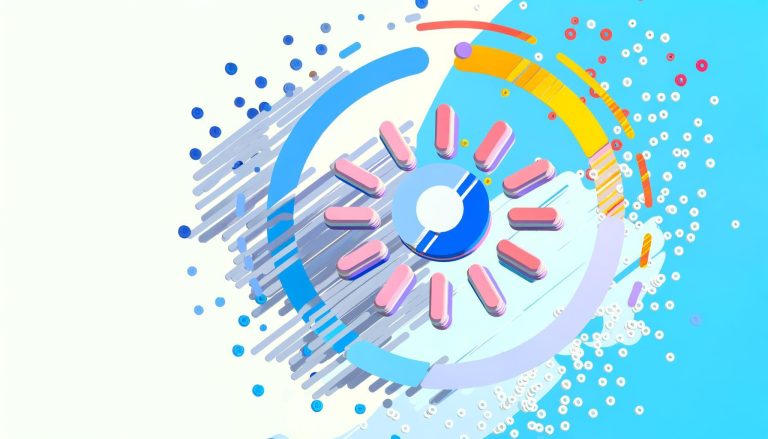In today’s fast-paced and dynamic educational landscape, conflicts in academic settings are inevitable. However, resolving conflicts effectively is crucial in fostering a positive learning environment. AI-powered conflict resolution techniques have emerged as innovative solutions that can aid educators, administrators, and students in addressing and mitigating disputes. These techniques can enhance communication, promote understanding, and create a harmonious learning atmosphere. This article explores various AI-powered conflict resolution techniques and their benefits in academic settings.
Introduction to AI-Powered Conflict Resolution
Conflict is a natural part of human interaction and can occur in any environment, including academic settings. Conflicts might arise due to differences in opinions, competition, miscommunication, or cultural misunderstandings. Traditional conflict resolution methods, although effective, can be time-consuming and may not always address the root causes. AI-powered conflict resolution techniques offer a modern approach, harnessing the power of technology to assist in conflict management, ensuring a more positive and engaging learning environment.
Understanding AI in Conflict Resolution
Artificial Intelligence (AI) uses advanced algorithms and machine learning to analyze data, recognize patterns, and make decisions. In conflict resolution, AI can help identify underlying issues, suggest solutions, and facilitate communication between conflicting parties. From chatbots to sentiment analysis and predictive modeling, AI brings a suite of tools to create a more efficient and empathetic resolution process.
AI-Powered Techniques for Conflict Resolution
Various AI-powered techniques can be integrated into academic settings to manage and resolve conflicts. Some of the most effective ones include:
1. Sentiment Analysis
Sentiment analysis uses natural language processing (NLP) to evaluate the emotions conveyed in written or spoken communication. In an academic setting, AI can analyze emails, discussion posts, or verbal exchanges to detect negative emotions like frustration, anger, or sadness.
- Identify Conflicts Early: By recognizing negative sentiments early, educators and administrators can intervene before conflicts escalate.
- Empathy in Communication: Sentiment analysis can guide educators on how to respond empathetically, fostering a supportive environment.
2. AI Chatbots
AI chatbots can serve as mediators in conflict situations, offering real-time assistance and guidance to students or staff members involved in a dispute.
- 24/7 Availability: Chatbots can provide support at any time, ensuring that conflicts are addressed promptly.
- Neutral & Impartial: AI chatbots can offer unbiased advice and solutions, promoting fair resolution processes.
- Resource Recommendations: Chatbots can suggest relevant resources, such as counseling services or conflict resolution programs.
3. Predictive Analytics
Predictive analytics involves using data to forecast potential conflicts, allowing for preemptive actions.
- Proactive Interventions: By identifying patterns that lead to conflicts, educators can address issues before they escalate.
- Resource Allocation: Schools can allocate resources more effectively, focusing on areas or individuals needing the most support.
4. Virtual Reality (VR) Scenarios
VR simulations can immerse students and educators in virtual conflict scenarios, providing a safe space to practice resolution strategies.
- Hands-On Learning: Participants can engage in practical conflict resolution exercises, enhancing their skills and confidence.
- Realistic Scenarios: VR can replicate real-life situations, making the learning experience more relevant and impactful.
5. AI-Powered Surveys
AI can enhance surveys by analyzing responses quickly and accurately to gauge the emotional climate of a classroom or institution.
- Actionable Insights: AI can identify trends and key issues from survey data, guiding targeted interventions.
- Continuous Feedback Loop: Frequent, AI-driven surveys can keep educators informed about the evolving needs and sentiments of their students.
Benefits of AI-Powered Conflict Resolution in Academic Settings
Integrating AI-powered conflict resolution techniques in academic environments comes with numerous benefits:
Enhanced Communication
AI tools can facilitate better communication by providing insights into the emotions and perspectives of all parties involved. This leads to more empathetic interactions and a deeper understanding of the issues at hand.
Timely Interventions
With AI’s ability to analyze data quickly, potential conflicts can be identified and addressed in their early stages, preventing escalation and reducing stress among students and staff.
Personalized Support
AI can tailor conflict resolution approaches to the individual needs of students and educators, ensuring that everyone receives the support they require.
Data-Driven Decisions
AI provides a wealth of data that can inform policies and practices. Schools can use this information to improve their conflict resolution strategies continuously.
Practical Tips for Implementing AI-Powered Conflict Resolution
While the benefits of AI in conflict resolution are clear, successful implementation requires thoughtful planning and execution. Here are some practical tips:
1. Educate and Train Staff
Ensure that educators and administrative staff are well-versed in using AI tools. Training sessions can help them understand how to leverage these technologies effectively.
2. Integrate AI Seamlessly
Blend AI-powered tools with existing conflict resolution frameworks to ensure a smooth transition and avoid resistance from staff and students.
3. Prioritize Data Privacy
Maintain strict data privacy standards to safeguard the sensitive information collected and analyzed by AI systems.
4. Foster a Collaborative Culture
Encourage a culture of collaboration where students and staff feel comfortable using AI tools to resolve conflicts and provide feedback on their effectiveness.
5. Monitor and Evaluate
Regularly assess the impact of AI-powered tools on conflict resolution outcomes. Use this data to make necessary adjustments and improvements.
Conclusion
AI-powered conflict resolution techniques hold significant promise in fostering a positive learning environment in academic settings. From sentiment analysis and AI chatbots to predictive analytics and VR scenarios, these innovative tools can address conflicts effectively, leading to enhanced communication, timely interventions, personalized support, and data-driven decision-making. By embracing these technologies, academic institutions can create a more harmonious and supportive atmosphere, contributing to the overall well-being and success of their students and staff.
To further assist in managing conflicts and promoting a positive learning environment, consider exploring Zenora’s features, including mood and habit tracking through journal entries, which can provide valuable insights into emotional states and help identify potential areas of conflict early on.





